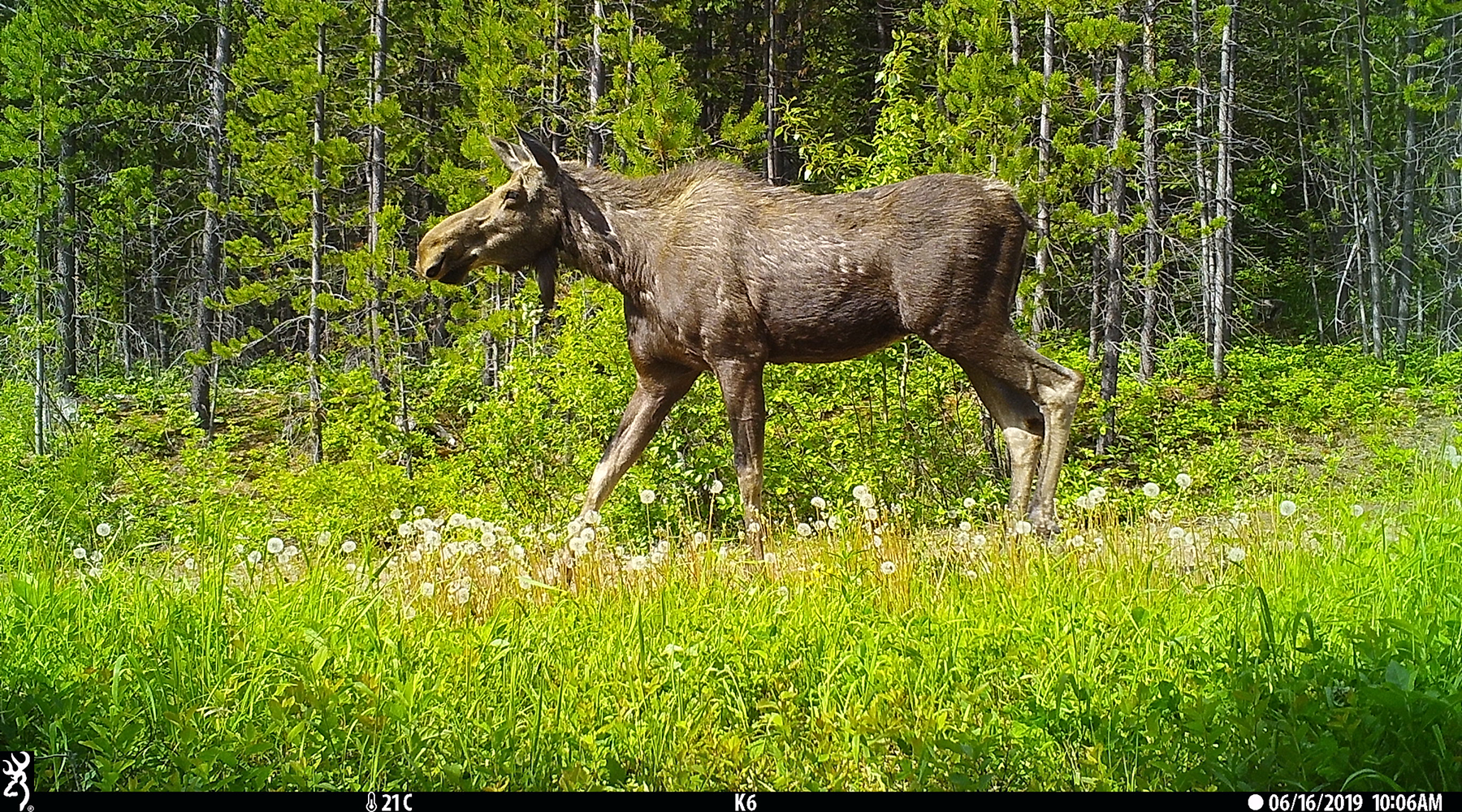Camera traps show impact of recreational activity on wildlife
September 24, 2020

September 24, 2020

The COVID-19 pandemic has fired up interest in outdoor activities in our parks and forests. Now a new UBC study highlights the need to be mindful of how these activities may affect wildlife living in protected areas.
Researchers placed motion-activated cameras on the trails in and around the South Chilcotin Mountains Provincial Park in southwestern B.C., a region popular for its wildlife and recreational activities such as hiking, horseback riding, ATV riding and mountain biking. Overall, they found that environmental factors—like the elevation or the condition of the forest around a camera location—were generally more important than human activity in determining how often wildlife used the trails.
However, there were still significant impacts. Deeper analysis of trail use captured by the cameras showed that all wildlife tended to avoid places that were recently visited by recreational users. And they avoided mountain bikers and motorized vehicles significantly more than they did hikers and horseback riders.
The researchers focused on 13 species including grizzly bear, black bear, moose, mule deer and wolf.
“We wanted to better understand the relative impacts of human recreation in this region, given its increasing popularity. We already know that motorized vehicle access can disrupt wildlife; our initial findings suggest that other types of recreation may also be having impacts,” said study author Robin Naidoo, a UBC adjunct professor at the Institute for Resources, Environment and Sustainability.
Like many parks, the South Chilcotin Mountains provincial park and nearby regions are experiencing growing pressure from human activities—both recreational and industrial. According to Naidoo, the study confirms that camera traps can effectively monitor both wildlife and human trail use in these and other remote regions. “We’ll be able to collect more information over time and build a solid basis for research findings that can ultimately inform public policy,” he added.
Study co-author Cole Burton, a professor of forestry at UBC and the Canada Research Chair in terrestrial mammal conservation, says further research will be needed before any firm conclusions can be drawn.
“This is the first year of our multiyear study of the region. We’ll continue to observe and to analyze, so that we can better understand and mitigate the effects of these different human activities on wildlife,” said Burton. “Outdoor recreation and sustainable use of forest landscapes are important, but we need to balance them with potential disruption of the ecosystem and the loss of important species.”
“Relative effects of recreational activities on a temperate terrestrial wildlife assemblage” was published recently in Conservation Science and Practice. The study received funding from Habitat Conservation Trust Fund, World Wildlife Fund, Lillooet Naturalists Society and BC Parks.
We honour xwməθkwəy̓ əm (Musqueam) on whose ancestral, unceded territory UBC Vancouver is situated. UBC Science is committed to building meaningful relationships with Indigenous peoples so we can advance Reconciliation and ensure traditional ways of knowing enrich our teaching and research.
Learn more: Musqueam First Nation